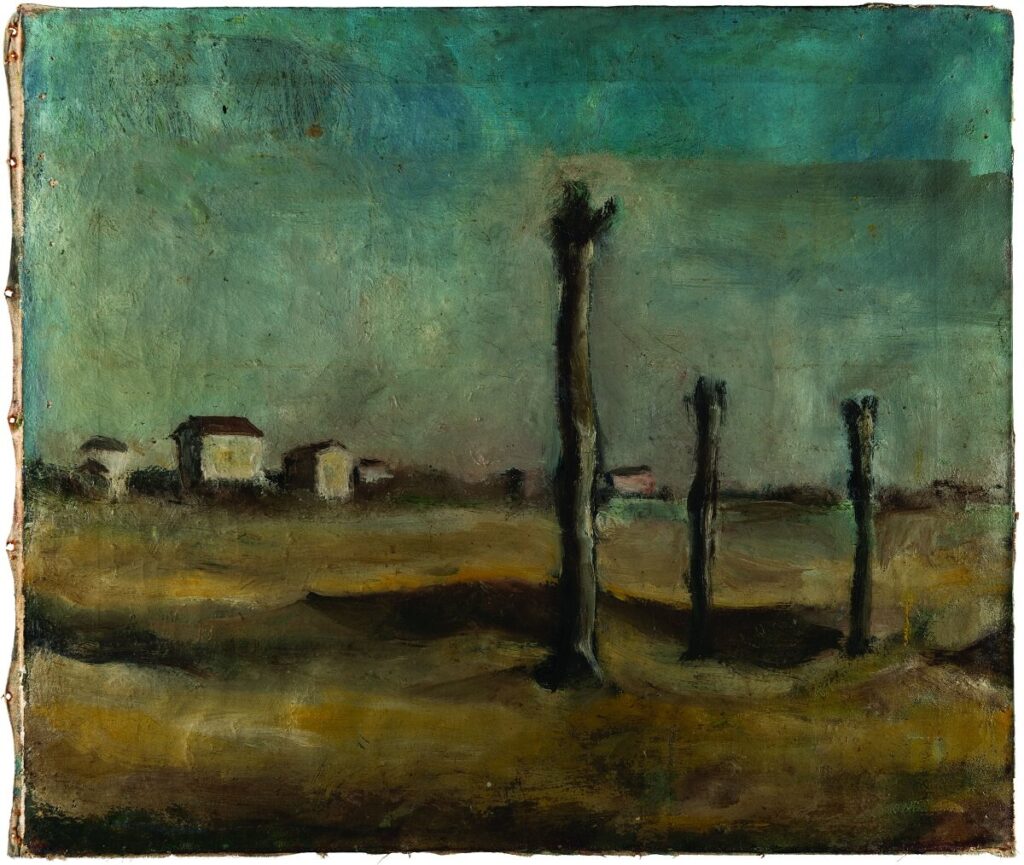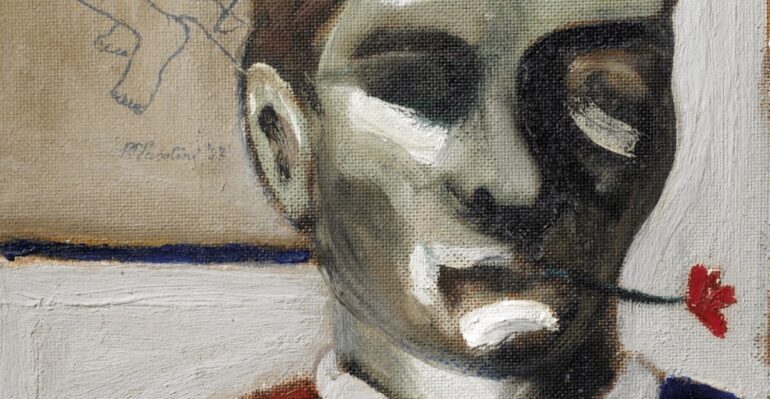An unprecedented look at a great master’s artistic work: “Pasolini Pittore”
From October 29th to June 4th 2023 the Galleria d’Arte Moderna in the heart of Rome reveals a crucial, albeit little known, aspect of filmmaker and poet Pier Paolo Pasolini’s artistic work: his painting.
Pasolini would have been 100 this year and to honour and celebrate him Rome has come up with four dedicated exhibitions. Three, at Palazzo delle Esposizioni, MAXXI and Palazzo Barberini, are grouped under the theme Tutto è Santo (everything is sacred), and broadly cover the key conceptual and spiritual insights of the artist’s lifework. The exhibition Pasolini Pittore diverges from the other three because, rather than inviting viewers to reflect on the deep political, social and spiritual aspects of the poet’s thoughts, it lures them into the more intimate and personal spheres of his life.
“I don’t read so much, but I do paint” is the statement uttered by Pasolini that marks the starting point of the exhibition on the first floor of the Galleria. Pasolini started painting early on in his life, experimenting with the representation of the most simple and essential aspects of being alive. Bodies, as in other works of his, are central: human bodies sitting, laying, looking into mirrors, washing themselves, reading, playing. The depiction of the body in Pasolini’s art is delicate and gentle, devoid of any malice and humour, it is the body in its beauty, essence and truth that he attempts to portray and he translates this delicate atmosphere in his paintings of natural landscapes too.

These, constituting another part of the exhibition, take us with him to the lands and memories of his childhood in a cold and desolate Friuli, in the north of Italy, but where children played in the countryside and where the countryside gave everything to children. In this second set of paintings, there is the typical melancholy of nostalgia, of reminiscing about one’s gone past, but there also transpires the painter’s deep affection for and attachment to his land. These landscapes also testify to Pasolini’s exceptional artistry and experimentation with pigment.
An important section is dedicated to self-portraiture and portraiture, pictorial genres much loved by Pasolini. The latter take visitors particularly close to the artist’s heart, as, on display, there are several portraits of some of the people he loved the most: his cousin Nico Naldini, his mother Susanna, his cousin Franca – the series linked to the protagonists of Pasolini’s artistic world – Giovanna Bemporad, Federico De Rocco, Giuseppe Zigaina – as well as those from the Roman film world – Laura Betti, Ninetto Davoli – with a special focus on portraits of his poet friend Andrea Zanzotto.

Here, the feelings of melancholy and nostalgia that permeated his landscapes are lifted, to give room to a lighter mood, a joy even, typical of those familiar exchanges with people with whom you have fun – besides all else. Most of these portraits are colourless, they are sketches, almost caricatures-cartoons, but they do not mock the represented subjects, rather they play with them, and let that feeling of intimacy, that runs through all of the works in the exhibition, get straight to the viewer.
A separate section concerns the portraits of three protagonists of the cultural and artistic world of Pasolini: Ezra Pound, Roberto Longhi and Maria Callas, which give life to an ‘exhibition within the exhibition’, thanks to a careful reconstruction of the phases of realisation of the works, illustrating Pasolini’s creative and technical investment.

Following, a section that takes us to Pasolini’s years in Bologna as a student and opens a window onto his artistic relationship and friendship with Fabio Mauri, with drawings made by the two in the 1940s-50s – some of which are being publicly shown for the first time ever.
On the second floor of the gallery, the exhibition breaks from Pasolini’s own hand with an area dedicated to the works of some of the 20th century artists whose style Pasolini strongly appreciated, including: Carlo Carrà, Filippo de Pisis, Giorgio Morandi, Mario Mafai, Scipione and Antonietta Raphäel, Federico de Rocco, Franco Gentilini, Virgilio Guzzi, Renato Guttuso, Carlo Levi, Giacomo Manzù, Toti Scialoja, Lorenzo Tornabuoni, Renzo Vespignani, and Giuseppe Zigaina. Also on show are some of the works owned by Pasolini himself: paintings by Massimo Campigli, Giorgio de Chirico, Renato Guttuso, Carlo Levi, Alberto Savinio and Andy Warhol, for example.
The exhibition closes with a homage to Pasolini’s ‘face’, through a series of historical portraits made by Ennio Calabria, Renato Guttuso, Carlo Levi, Milo, Manara, Mario Schifano and others. Despite the different styles and the different times in which these portraits were made, the sweet, caring and pensive gaze of one of Italy’s greatest remains unaltered.
Until 4 June 2023
GALLERIA D’ARTE MODERNA
Via Francesco Crispi, 24
Opening times: Tue-Sun 10am-6.30pm
Tickets: Full 10 € – Reduced 8€



